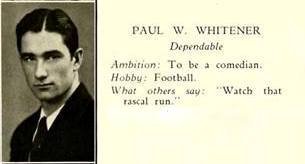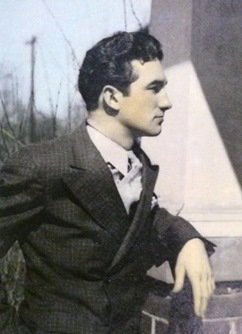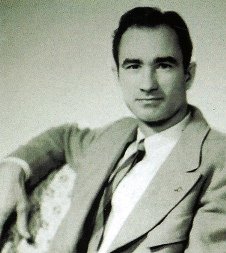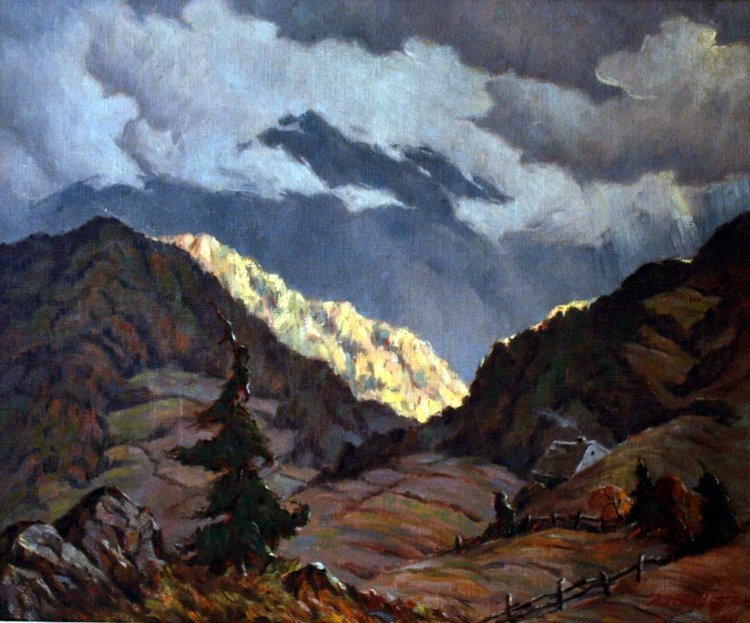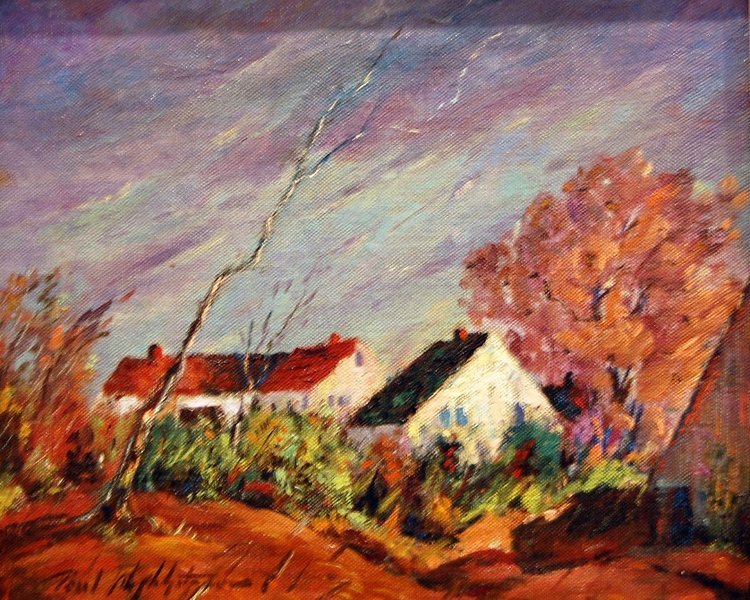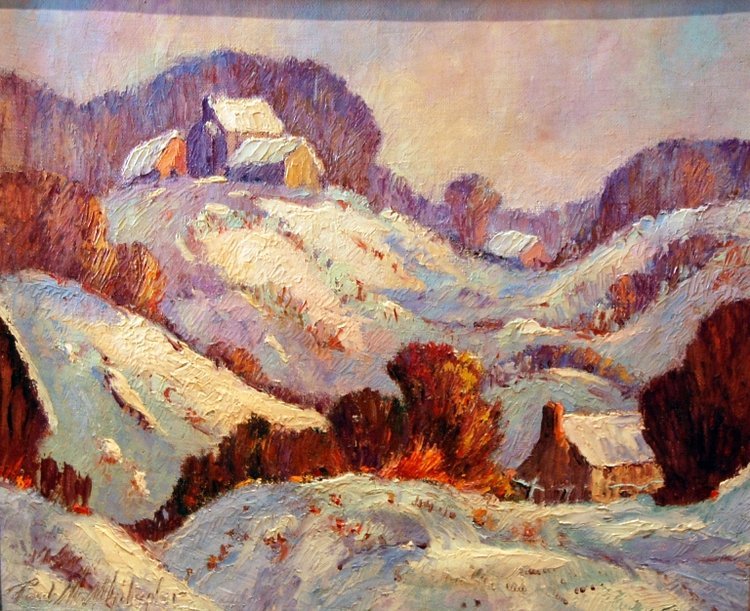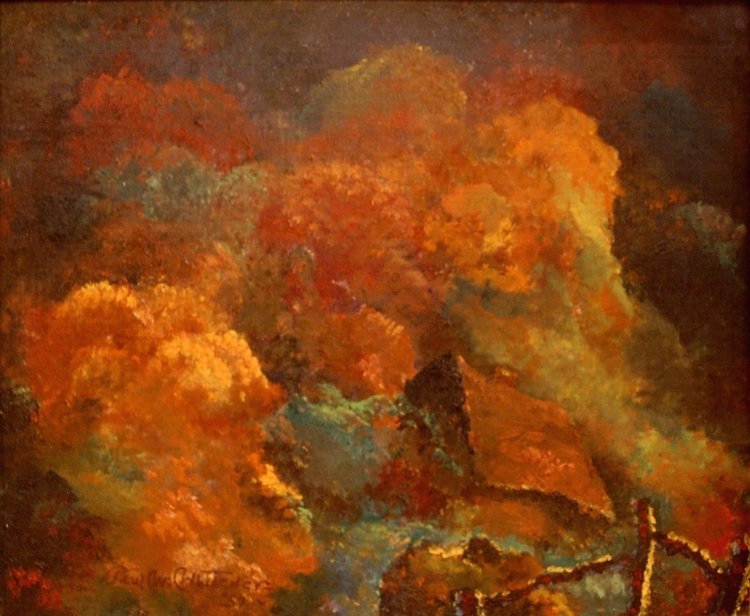Paul Whitener, HMA founder and first director (1911-1959)
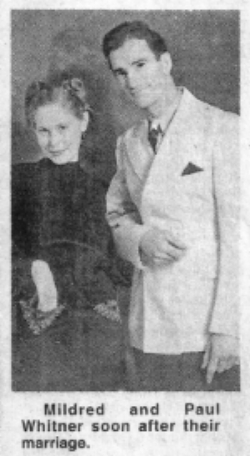
On the left above is the 1932 Hickory High School yearbook’s entry for Paul in his senior year..
The Hickory Museum of Art's founder and first director Paul Austin Wayne Whitener was born in Lincoln County, NC, and was educated in the Hickory Public Schools and at Duke University where he played football on a scholarship. He met his future wife Mildred (Mickey) McKinney when he was working with the planners of the Blue Ridge Parkway near Little Switzerland NC where she lived. She was then taking painting lessons; and he became enchanted both with her and with trying painting.
“ … When Mildred was 19, she was taking art lessons from Mr. Herring [Frank Stanley Herring 1894-1966]. One day, her cousin … introduced her to a young man. His name was Paul W. Whitener from Hickory. … He and Mildred married in 1936 and moved to Hickory. Paul started painting with Mr. Herring … Chance meetings gave a legacy to us all in North Carolina.” (From article in the Mitchell News-Journal, September 8th, 2010.)
Newspaper photo on right of Paul and Mickey shortly after their August 22, 1936 wedding.
(From a July 2, 2002 interview with Mickey in the Yancey Common Times Journal.)
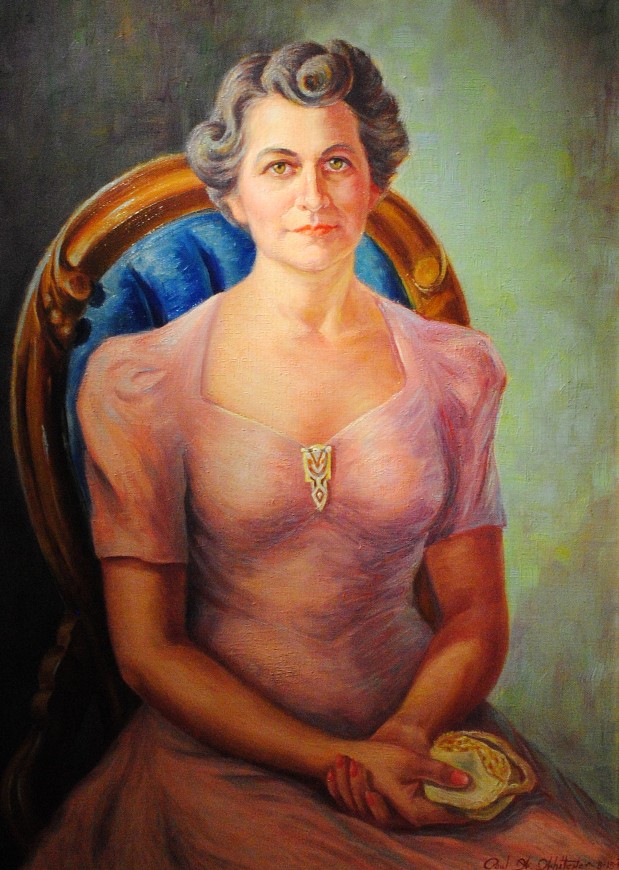
Whitener did pursue some more formal art instruction; but he once said that "any skill I have been able to acquire [as a painter] has come largely through experiment." By the early 1940's, Whitener had become an accomplished artist who painted both portraits and nature, the portraits often on commission such as this one (on left) of Kathryn R. Frye (wife of surgeon Dr. Glenn R. Frye after whom Hickory’s Frye Hospital is named), though also often through their years together, Mickey was Paul's model. Paul continued to paint even as he pursued his growing passions first to establish an art museum in Hickory and then as its director for fifteen years.
The selections of Paul's oil nature paintings below show how his style grew and changed over the years, and also it demonstrates his particular love for the Western North Carolina Mountains. Left to right in the rows is Fleeting Moments (1944), Catawba Valley (1946), Windy Afternoon (1948), Snow (1951), Blue Ridge Parkway (1955), and Autumn Leaves (1959).
“He loved the mountains and he studied them constantly. Paul would go out and view a mountain or a landscape that he liked. He would make sketches and notations on color… then would come home and paint them in his studio. He would sometimes paint small sketches on location, but usually, most of the big things that he did, he painted from memory.” (Reminiscence by his wife Mickey Whitener Coe.)

In the mid-1950's Paul developed a brain tumor that paralyzed his right side and he had to re-learn to paint with his left hand and with new tools, cato ink and casein paint, dabbing the paint rather than stroking it. During the last two years of his illness, Mickey spent most of her time taking care of him while his father tended to the Museum's day-to-day business.
The Museum collected over 200 art objects under Paul's leadership. Many of the works came at the advice of Wilford Conrow (1880-1957), a successful portrait painter in New York City who summered in the North Carolina mountains and became a friend and mentor to Paul. With Conrow’s guidance, Paul and Mickey learned of many accomplished painters, establishing lasting personal relationships with some of them, as evidenced by the warm letters they exchanged. (HMA has in its files the often handwritten personal replies from these artists that speak of Paul's letters, though few of Paul's own letters remain at HMA.)
In November 1944, an exhibit featuring a selection of Conrow's portraits opened at HMA as the museum's first one-person show.
For more about Paul and his ambitions, enjoy this twelve minute 2011 YouTube video that
features several people who knew Paul well, fondly reminiscing about him and his museum’s early days.
First published July 18, 2018, as part of the celebration of HMA's first 75 years. All images are from HMA's files.


